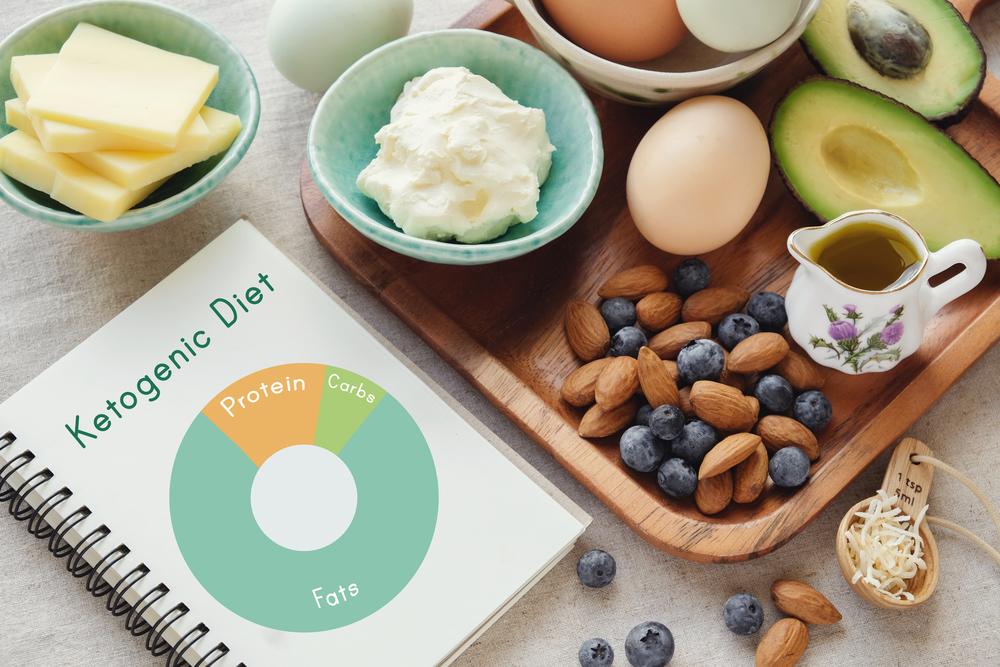How to Choose (and Stick with) the Most Effective Eating Plan to Achieve your Goals
The diet industry in America is a $70.3 billion dollar enterprise and growing – and Americans can’t seem to get enough of weight loss products, plans, and branded food items (Roepe, 2018). While consumers continue looking for the next “easy fix” for weight loss, various diets continue to go in and out of style, but how can those looking to lose weight (and keep it off) understand which diet is the best for meeting their needs?
With the sheer volume of information available on the various diet options, it can be overwhelming to understand how each type of diet works, which foods are recommended and which foods to avoid, calorie recommendations, and how to integrate exercise for maximum weight loss. Outlining the various diet options, their requirements, and pros and cons can be an effective way to get started in your weight loss journey – and more importantly, learn how to keep the weight off for good.
When starting a new eating or exercise plan, it is crucial to consult with your physician to ensure the diet is a good fit for you. This article is meant to provide an overview of common diets using evidence-based information and research, but is not meant to be a substitute for medical care. A trained, board certified medical professional and/or nutritionist can take a holistic view of your health to provide additional recommendations that are customized to your needs.
Getting in the Right Mindset
Before beginning any weight loss journey, it’s important to get into the right mindset in order to understand why you’re taking these actions. Namely, understanding if you are interested in making a change to improve your health, lose weight, gain muscle, improve your physical fitness, or for ethical and/or environmental reasons.
“Deciding which diet is best for you depends on what your goal is, and your reason for changing your diet. Is this change going to be a short-term thing, or is this a lifelong change? If your goal is to lose a few pounds before your best friend’s wedding in four weeks, your diet can be stricter and focus on intake of a caloric deficit. If you plan on making a lifelong change, you have to make a more conscious choice to select a diet that you can maintain long-term,” said Sadie Abboud, MSN, FNP-BC.
She also recommends having a plan and doing your research.
“I did a lot of extensive evidence-based research and through my studies, I learned that a whole-food plant-based diet is the diet that reduces your risk for diabetes, heart disease, cancer, and many other chronic illnesses the most. Having a strong, clear purpose in changing my diet made it simple to find the right one for me,” she said.
Learning about the various types of diet options, as outlined in this article, can help you select the one that is best for your lifestyle, goals and needs.
The Atkins and Ketogenic Diets

Followers of the Ketogenic diet focus on incorporating high-fat food products such as full-fat dairy (milk, butter, cream cheese to name a few). This may seem counterproductive, since these products contain various types of fats. For example, saturated fats (like those included in butter and coconut oil) are recommended for individuals following a ketogenic diet. Monounsaturated fats (like those in avocado and eggs) are also permitted. Polyunsaturated fats (like those in animal protein and fatty fish) are permitted as well. Finally, individuals following a ketogenic diet should completely avoid food products containing trans fats, like margarine and most snack food items. Keto diet followers should aim to eat fewer than 50 grams of carbs per day, which amounts to less than four slices of bread. Since carbs are in many of the foods we consume, dieters should take special care to avoid carbohydrates in all forms, even in “hidden sources” like sodas and salad dressings.
This diet can be an effective one due to the process of ketosis, which is a metabolic state in which ketones are elevated. Ketosis is a normal metabolic state – but when your body doesn’t have enough carbs from foods, it begins burning fat instead, and it is during this process that ketones are released. Ketones are a type of chemical made in your liver, and the state of ketosis is a direct result of being on a low-carb diet (Mawer, 2018).
In terms of potential health benefits, Ketogenic diets were initially recommended for epileptic individuals, as research shows that this diet can reduce seizures (Hemingway, Freeman, Pillas, & Pyzik, 2001). Though research is in its preliminary stages, ketosis is thought to have cognitive and brain benefits by reducing Alzheimer’s symptoms and slowing the progression of the disease (Gasior, Rogawski, & Hartman, 2008). Overall, diets like these can be a good choice for individuals who are looking to lose weight quickly, but they should be mindful of implementing strategies to keep the weight off in the long term.
Paleo: The Low Glycemic Diet
Another popular diet is the Paleo diet, which was created under the principle that humans should be consuming foods that our Paleolithic ancestors would have consumed. This means eating lots of fruits, vegetables, nuts and seeds; lean meats like grass-fed animals or wild game such as bison, fish; and oils such as olive oil. Foods that should be avoided on this diet include grains, legumes and beans, dairy products, salt, refined sugar and processed foods (Mayo Clinic, 2017).
A research study conducted on 29 men with heart disease and elevated blood sugar levels or type 2 diabetes shows that the Paleo diet improved glucose tolerance amongst the participants when compared to a group that was following the Mediterranean diet (Lindeberg et al., 2007).
Another study conducted with nine sedentary, non-obese participants had them following their regular diet for three days, and then a “ramp-up” diet where their potassium and fiber intakes were increased for a week, then they followed a Paleo diet for 10 days. When compared with their regular diet, adherence to the Paleo diet resulted in lower blood pressure, LDL cholesterol, and triglyceride levels amongst the participants (Frassetto, Schloetter, Mietus-Synder, Morris, & Sebastian, 2009).
Mediterranean Diet
The Mediterranean diet is named for the cuisines and foods traditionally consumed in the Mediterranean region. When people think of the Mediterranean diet, they may think about olive oil, seafood, and bread. Indeed, this diet is rich in fruits, vegetables, olive oil, legumes, whole grains and fish. Research shows this diet has cardiovascular and cognitive benefits. More specifically, following a Mediterranean diet can lower a person’s risk for Alzheimer’s disease by slowing the rate of cognitive decline in older adults and reducing the risk and/or progression of mild cognitive impairment, which ultimately turns into Alzheimer’s disease (Lourida et al., 2013).
Other research has shown that the Mediterranean diet reduces other instances of chronic disease. A meta-analysis examined 13 observational studies and 16 randomized clinical trials showed that following the Mediterranean diet reduces mortality risk, as well as risk for heart diseases, cancer, diabetes and cognitive diseases (Dinu, Pagliai, Casini, & Sofi, 2018).
Incorporating heart-healthy, Mediterranean elements in your diet is easy. For example, substituting olive oil for other oils (especially vegetable oils), incorporating more whole grains and fish into your weekly diet is a good place to start.
Vegetarian/Vegan: Plant-based lifestyle diets

Vegetarians can consume fruits, vegetables, dairy, legumes, grains, seeds and nuts. Vegans can consume all the items vegetarians consume, minus dairy products. As a general rule, Americans should try to include as many greens and fruits in their diet as possible to meet the daily recommended servings per the United States Department of Agriculture. USDA recommends adults consuming 2,000 calories per day should eat two cups of fruit and 2 ½ cups of vegetables per day.
Benefits of following a predominantly plant-based diet include protection against type 2 diabetes (Jenkins et al., 2003), as well as hypertension control, promoting heart health, and weight loss (Melina, Craig, & Levin, 2016).
Going vegetarian or vegan can be a difficult transition at first, but many followers say it is very much worth it and think of their diet as an integral part of their lives. For those who are not ready to make the switch, there are small-scale ways to increase vegetable and fruit intake in a way that would positively augment any diet. Choosing to fill your plate with more greens and less refined foods, or taking part in “Meatless Monday” are just two ways to make healthier choices.
Branded diet programs
Branded diet programs such as Jenny Craig, Weight Watchers, and the South Beach Diet have a large market and loyal following. Programs such as these involve attending classes, meetings, and food tracking. Most of them, such as Jenny Craig, also assign a dedicated consultant to helping participants stay accountable and on track during their weight loss journey. Programs like Weight Watchers have wellness workshops, coaches and online communities where participants can share their stories, before and after photos, food ideas, and more. The appeal of these branded programs can be the sense of comradery, loyalty and community they foster amongst participants.
In addition, these companies also sell branded food items that make it easy for participants to know which foods are allowed, and are often pre-packaged with calorie guidelines or contain information about the point value of the item (for example, Weight Watchers foods contain point values on each package).
Systematic reviews of the efficacy of these types of weight loss programs show mixed results. There are other factors to consider, such as cost-effectiveness (Tsai & Wadden, 2005). These programs can be costly, and keeping the weight off long-term can also be an issue. Weight Watchers enrollees who attended the most group sessions over the study period of two years were able to keep the weight off at the end of the period (Tsai & Wadden, 2005).
Another study investigating weight loss and maintenance showed that following these regimented weight loss programs resulted in greater weight loss over the two-year study period (Rock, Flatt, & Sherwood, 2010). These results show that there is something to be said about the appeal of how structured the programs can be, and that type of structure can be appealing for individuals who need a greater entity to help them stay accountable.
Overall, many participants have experienced success in achieving their weight loss goals by following these programs. For those who don’t want to commit to following the programs, the concept of tracking food intake and mindful eating can be a great takeaway for the general population. Downloading a free “food diary” or calorie-tracking app can help people educate and empower themselves when it comes to their eating habits, and allow them to become more informed and accountable when it comes to their food consumption.
Meal replacement diets
Popular in the ‘80s, meal replacement diets like Slimfast involve consuming shakes or other liquid drinks for the purpose of achieving weight loss and staving off hunger. Some consumers may drink protein shakes to aide in building muscle or to suppress their appetites temporarily, whereas some drinks are meant to completely replace meals.
Slimfast has been expanded to include branded products beyond just shakes, but also branded 100-calorie snacks like cookies and chips. On a daily basis, they recommend individuals to replace two meals with a shake, bar or cookies; have one healthy meal and consume three 100-calorie snacks in between. Slimfast also recommends avoiding sugary beverages and recommends 30 minutes of exercise per day, which is useful advice for anyone looking to lose weight.
As for the research, meal replacement diets have been shown to help with weight loss and loss of body fat (Truby et al., 2006). For obese individuals, meal replacement diets can help them stick with their weight loss, but the long-term efficacy is not clear (Keogh & Clifton, 2005).
On a similar note, intermittent fasting can also be an effective, evidence-based way to lose weight. Intermittent fasting, when done safely, has also been shown to improve diabetes, cardiovascular disease, cancer and neurological disorders in laboratory rats and mice (Mattson, Longo, & Harvie, 2017).
How to Stay Committed
When the journey to eating healthier and losing weight feels impossible, it’s important to take things day by day in order to maintain a realistic perspective.
“I also remind my clients to take baby steps. When it feels too hard, start simple and small. Most people try to eliminate things they perceive as ‘bad’ or ‘unhealthy’ all at once. I recommend infusing your diet with nutrient-dense foods as a first step, and little by little eating less of certain ‘unhealthy’ foods,” said Health Coach Mercedes Ruiz Castaneda, MSN, APRN.
Conclusion
A comprehensive overview of the main diet and weight loss programs that are popular and/or commercially available can help individuals decide which programs might be right for them. It is also important to consider factors such as weight loss and body fat goals, dietary habits, and ability for the individual to adhere to the diet properly and safely. Overall, finding a diet that works for you and your lifestyle – as well as putting together strategies to stick with the diet even when things get challenging – is the key. When changing your diet, you’re also changing your lifestyle, so remembering to incorporate fun and healthy levels of exercise are also ways to boost weight loss in the short and long term.
By Nicki Karimipour, PhD

Dr. Karimipour has previous experience in writing and editing for both print and online publications, and in teaching journalism, health writing, and public relations at the undergraduate and graduate level.
Her research-related experience ranges from collaborating with medical researchers and consulting on clinical trials, to clinical research program management. Her own research focuses on a variety of health topics, such as effects of social media use on female body image, football and concussions, and e-cigarette use among youth. Her research has been published in the Journal of Clinical and Translational Research, the Journal of Behavioral Health Services & Research, and the Journal of Sports Media.
She is based in Los Angeles, California and currently works at the University of Southern California in clinical trial operations. Follow her on Twitter: @NickiKPhD
References
Andersen, C.H. (2018). “The 10 best diet programs for every goal.” Shape Magazine. Retrieved from https://www.shape.com/healthy-eating/diet-tips/10-best-diet-programs
Centers for Disease Control and Prevention. (2018). “Planning Meals.” Retrieved from https://www.cdc.gov/healthyweight/healthy_eating/meals.html
Dinu, M., Pagliai, G., Casini, A., & Sofi, F. (2018). Mediterranean diet and multiple health outcomes: an umbrella review of meta-analyses of observational studies and randomised trials. European Journal of Clinical Nutrition, 72, 30-43.
Frassetto, L.A., Schloetter, M., Mietus-Synder, M., Morris, R.C., & Sebastian, A. (2009). Metabolic and physiologic improvements from consuming a paleolithic, hunter-gatherer type diet. European Journal of Clinical Nutrition, 63, 947-955.
Gans, K. (2018). “The best diet for your health.” Shape Magazine. Retrieved from https://www.shape.com/blogs/weight-loss-coach/best-diet-your-health
Gasior, M., Rogawski, M.A., & Hartman, A. (2006). Neuroprotective and disease-modifying effects of the ketogenic diet. Behavioural Pharmacology, 17(5-6), 431-439.
Jenkins, D.J.A., Kendall, C.W.C., Marchie, A., Jenkins, A.L., Augustin, L.S.A., Ludwig, D.S., Barnard, N.D., Anderson, J.W. (2003). Type 2 diabetes and the vegetarian diet. The American Journal of Clinical Nutrition.
Keogh, J.B., & Clifton, P.M. (2005). The role of meal replacements in obesity treatment. Obesity Reviews, 6(3), 229-234.
Lindeberg, S., Jonsson, T., Granfeldt, Y., Borgstrand, E., Soffman, J., Sjostrom, K, & Ahren, B. (2007). A Palaeolithic diet improves glucose tolerance more than a Mediterranean-like diet in individuals with ischaemic heart disease. Diabetologica, 50(9), 1795-1807.
Lourida, I., Soni, M., Thompson-Coon, J., Purandare, N., Lang, I.A., Ukoumunne, O.C., & Llewellyn, D.J. (2013). Mediterranean Diet, cognitive function, and dementia: A systematic review. Epidemiology, 24(4), 1-11.
Mawer, R. (2018). “The Ketogenic Diet: A Detailed Beginner’s Guide to Keto.” Retrieved from https://www.healthline.com/nutrition/ketogenic-diet-101
Mayo Clinic Staff. (2017). “Paleo diet: What is it and why is it so popular?” Retrieved from https://www.mayoclinic.org/healthy-lifestyle/nutrition-and-healthy-eating/in-depth/paleo-diet/art-20111182
Melina, R., Craig, W., & Levin, S. (2018). Position of the Academy of Nutrition and Dietetics: Vegetarian Diets. Journal of the Academy of Nutrition and Dietetics, 116(12), 1970-1980.
Rock, C.L., Flatt, S.W., Sherwood, N.E., Karanja, N., Pakiz, B., & Thomson, C. (2010). Effect of a Free Prepared Meal and Incentivized Weight Loss Program on Weight Loss and Weight Loss Maintenance in Obese and Overweight Women: A Randomized Controlled Trial. Journal of the American Medical Association, 304(16), 1803-1810.
Roepe, L.R. (2018). “The Diet Industry.” Retrieved from https://businessresearcher.sagepub.com/sbr-1946-105904-2881576/20180305/the-diet-industry
Truby, H., Baic, S., deLooy, A., Fox, K.R., Livingstone, M.B.E., Logan, C.M., Macdonald, I.A., Morgan, L.M., Taylor, M.A., & Millward, J.D. (2006). Randomised controlled trial of four commercial weight loss programmes in the UK: Initial findings from the BBC “diet trials.” British Medical Journal, 332, 1309.
Tsai, A.G., & Wadden, T.A. (2005). Systematic Review: An Evaluation of Major Commercial Weight Loss Programs in the United States. Annals of Internal Medicine, 142(1), 56-66.
U.S. Department of Health and Human Services and U.S. Department of Agriculture. (2015). “2015–2020 Dietary Guidelines for Americans.” Retrieved from https://health.gov/dietaryguidelines/2015/guidelines




 Compact/Folding
Compact/Folding Front Drive
Front Drive Rear Drive
Rear Drive